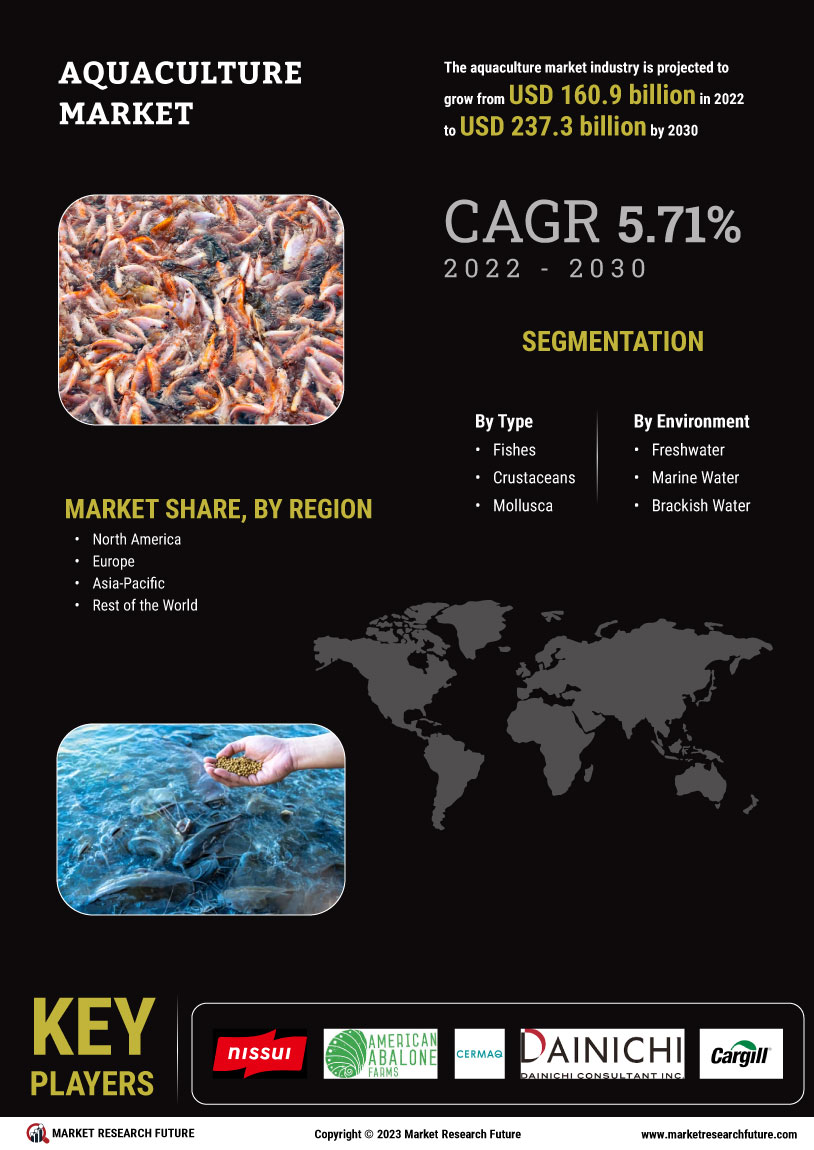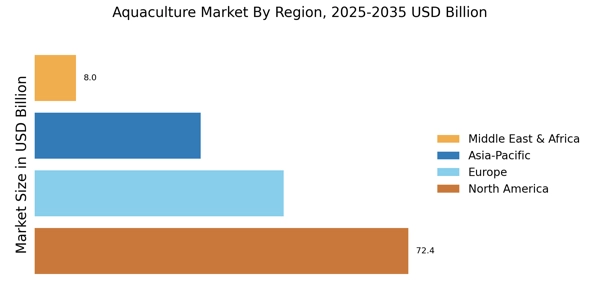Rising Demand for Seafood
The increasing The Aquaculture Industry. As populations grow and dietary preferences shift towards healthier protein sources, seafood consumption is on the rise. According to recent data, seafood consumption has increased by approximately 20% over the last decade. This trend is likely to continue, as consumers become more health-conscious and seek sustainable food sources. The Aquaculture Market is positioned to meet this demand, providing a reliable supply of fish and shellfish. Furthermore, the shift towards aquaculture is seen as a solution to overfishing in wild fisheries, thereby ensuring the sustainability of seafood supplies. As a result, investments in aquaculture technologies and practices are expected to grow, further enhancing production capabilities.
Technological Advancements
Technological advancements play a crucial role in shaping the Aquaculture Market. Innovations such as automated feeding systems, water quality monitoring, and genetic improvements in fish breeding are enhancing productivity and efficiency. For instance, the adoption of recirculating aquaculture systems (RAS) has been gaining traction, allowing for higher stocking densities and reduced environmental impact. Data indicates that RAS can increase production by up to 30% compared to traditional methods. Additionally, the integration of artificial intelligence and data analytics is enabling farmers to optimize feeding schedules and monitor fish health more effectively. These technological improvements not only boost production but also contribute to the sustainability of the Aquaculture Market, making it more attractive to investors and stakeholders.
Regulatory Support and Policies
Regulatory support and favorable policies are increasingly influencing the Aquaculture Market. Governments are recognizing the importance of aquaculture in ensuring food security and promoting sustainable practices. Many countries are implementing policies that encourage investment in aquaculture, such as subsidies for sustainable practices and research funding. For example, certain regions have established frameworks that facilitate the development of aquaculture while ensuring environmental protection. This regulatory environment is likely to foster growth in the Aquaculture Market, as it provides a stable foundation for businesses to operate. Furthermore, international agreements aimed at promoting sustainable fishing practices are also benefiting aquaculture, as they shift focus towards farmed seafood as a viable alternative.
Growing Investment in Aquaculture
Growing investment in the Aquaculture Market is a significant driver of its expansion. Investors are increasingly recognizing the potential of aquaculture as a sustainable and profitable sector. Reports indicate that investments in aquaculture have surged, with funding directed towards innovative technologies, infrastructure development, and research initiatives. This influx of capital is likely to enhance production capabilities and improve the overall efficiency of aquaculture operations. Moreover, venture capital firms and private equity are showing interest in aquaculture startups, further fueling growth. As the industry matures, the availability of funding is expected to increase, enabling aquaculture businesses to scale operations and meet the rising demand for seafood. This trend may lead to a more competitive and resilient Aquaculture Market.
Environmental Sustainability Initiatives
Environmental sustainability initiatives are becoming increasingly vital for the Aquaculture Market. As concerns about overfishing and habitat destruction grow, aquaculture is often viewed as a more sustainable alternative to wild fisheries. The industry is actively adopting practices that minimize environmental impact, such as integrated multi-trophic aquaculture (IMTA), which promotes biodiversity and resource efficiency. Data suggests that IMTA can enhance overall productivity by utilizing waste from one species as feed for another. Additionally, certifications for sustainable aquaculture practices are gaining traction, with consumers increasingly seeking products that meet these standards. This shift towards sustainability not only addresses environmental concerns but also enhances the marketability of aquaculture products, potentially leading to increased consumer trust and demand.


















Leave a Comment